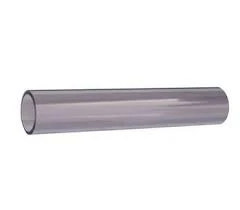Nov . 04, 2024 06:01 Back to list
hdpe pipe fitting
Understanding HDPE Pipe Fittings A Comprehensive Overview
High-Density Polyethylene (HDPE) pipe fittings have become increasingly important in various industries due to their durability, resistance to corrosion, and flexibility. This article explores the significance, applications, and benefits of HDPE pipe fittings.
Understanding HDPE Pipe Fittings A Comprehensive Overview
The manufacturing process of HDPE pipes involves extrusion, where polyethylene is melted and molded into the desired shape. The fittings, including elbows, tees, reducers, and couplings, are produced using similar processes and are designed to connect various pipe segments seamlessly. They are available in several sizes and configurations, allowing for flexibility in design and installation.
hdpe pipe fitting

One of the standout features of HDPE pipe fittings is their resistance to a range of chemicals, including acids and bases, which often leads to their use in chemical and wastewater applications. Furthermore, the smooth interior surface of HDPE fittings minimizes friction, resulting in lower energy costs associated with fluid transport. This efficiency is a significant reason why many engineers and project managers prefer HDPE systems over traditional materials like PVC or metal.
Additionally, HDPE fittings are lightweight, making them easier to handle and install. This characteristic translates into reduced labor costs and time savings during installation. HDPE is also resistant to UV radiation, reducing the risk of degradation when exposed to sunlight, further enhancing its longevity and performance.
Environmental considerations are becoming increasingly critical in construction and infrastructure development. HDPE is a recyclable material, which aligns with sustainable practices and reduces the environmental impact associated with plastic waste. When disposed of properly, HDPE can be reprocessed into new products, contributing to a circular economy.
In conclusion, HDPE pipe fittings offer numerous benefits, including durability, chemical resistance, and lightweight properties, making them a preferred choice in many applications. Their effectiveness and environmental friendliness make them a sustainable option for modern infrastructure projects. As industries continue to evolve and emphasize sustainability, HDPE pipe fittings are likely to play an integral role in the future of piping solutions.
-
Durable HDPE Sheet | Versatile & Impact-Resistant Plastic
NewsAug.13,2025
-
Premium PVC Soft Sheets: Clear, Flexible & Durable
NewsAug.12,2025
-
Premium PVC Round Rods: Durable, Chemical Resistant, Easy to Machine
NewsAug.11,2025
-
PP U-channel: Chemical-Resistant, Lightweight & Durable
NewsAug.10,2025
-
Transparent PVC Pipe: Clear Flexible Tubing for Fluids
NewsAug.09,2025
-
Durable PP Rigid Sheet: Versatile & High-Quality Plastic Panels
NewsAug.08,2025

